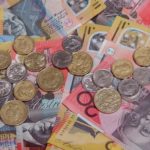The euro retreated from highs unseen since October 2011 against the US dollar, after European Central Bank Governing Council member Christian Noyer said that strengthening of the 18-nation common currency created downward pressure on euro zones economy.
EUR/USD hit a session low at 1.3867 at 11:27 GMT, after which the pair trimmed daily losses to trade little changed at 1.3882 at 12:35 GMT, adding 0.03% for the day. Support was likely to be found at March 7th low, 1.3852, while resistance was to be encountered at March 7th high, 1.3915, also the pairs strongest since October 2011.
“It’s a very important input in the economic development and inflation development,” Noyer said in a Bloomberg Television interview with Manus Cranny in Paris. “When the euro tends to strengthen, it creates additional downward pressure on the economy and inflation, which in both cases isn’t warranted. So we’re not happy at the moment.”
The 18-nation common currency has risen 6.7% in the past 12 months, curbing the price of imported goods, while challenging the competitiveness of euro zones exporters.
Last week, ECB President Mario Draghi also addressed the problem, saying that a stronger euro may affect the central banks price-stability objective.
On March 6th, the Governing Council of the ECB maintained its benchmark interest rate at a record-low 0.25%. The Council also decided to keep the deposit rate at zero and the marginal lending rate at 0.75%. On the press conference, following ECB’s interest rate decision the central bank President Mario Draghi said that deflation risks in the euro area are easing, boosting euro’s demand.
The ECB predicted that inflation will gradually accelerate. According to central bank’s estimates inflation in the euro area, which was at 0.8% last month, will accelerate to 1.7% in the fourth quarter of 2016. The cost of living will rise 1% this year, while it will accelerate to 1.3% in 2015 and an average 1.5% in 2015.
In February, Eurostat reported that the inflation rate had rebounded from a 4-year low of 0.7% in October, which prompted the ECB to cut the main interest rate unexpectedly in November. Inflation in the euro area grew at an annualized rate of 0.8% in February, the same as in the previous month and exceeding analysts’ projections for a 0.7% increase.
At the same time, core consumer prices, which exclude volatile items such as food, energy, tobacco and alcohol increased at an annualized rate of 1% in February, exceeding experts’ forecasts for a 0.8% advance and up from January’s 0.8% increase. February’s reading was also the strongest since September.
While the recovery remains fragile, with inflation still remaining less than half the ECB target of 2%, which the central bank uses to define price stability, economic data in the past four weeks seemed encouraging. Gross domestic product in the 18-nation common currency area rose 0.3%, more than analysts had projected, mainly driven by stronger expansions in Germany, France, Netherlands and a return to growth in Italy. In addition, economic sentiment jumped to more than a 2-1/2-year high last month, while services and manufacturing output surged the most since June 2011.
Meanwhile, greenbacks demand was supported on Friday after the Bureau of Labor Statistics in the US reported that nation’s employers managed to add 175 000 workers to payrolls in February, after a revised up 129 000 increase in the previous month. Analysts had expected a 149 000 advance in February. At the same time, the unemployment rate unexpectedly rose to 6.7% last month from a 5-year low of 6.6% as more Americans entered the workforce, but couldn’t find a job. The US added 194 000 jobs on average, each month last year.
The report suggested that US employers were upbeat about the economic outlook, after recent winter storms and much-below-normal temperatures across the US and especially across the eastern parts of the country, slowed consumer spending, housing and manufacturing.
“The fundamentals are good,” Joe LaVorgna, chief U.S. economist at Deutsche Bank Securities Inc. in New York, commented in a Bloomberg interview before the report. “Faster job growth means faster income and more discretionary spending. Ultimately, with more business spending, not only will they hire more people, they’ll hire more capital. Everything becomes self-reinforcing.”
At the same time, the deficit on United States’ trade balance widened insignificantly to reach 39.1 billion USD in January, after in December the deficit figure has been revised to 38.975 billion USD from 38.701 billion USD previously. Analysts had anticipated a deficit at the amount of 38.500 billion USD in January.
Factors behind this wider deficit have been the weaker fuel export and the increased import of oil. A larger trade deficit usually causes an adverse impact upon economic growth. Imports rose 0.6% to reach 231.6 billion USD in January, while overall export increased also by 0.6% to reach 192.5 billion USD during the same month.
Elsewhere, USD/JPY touched a session low at 102.94 at 07:05 GMT, after which the pair trimmed daily losses to trade little changed at 103.29 at 09:30 GMT, adding 0.03% for the day. Support was likely to be received at March 7th low, 102.84, while resistance was to be encountered at March 7th high, 103.76, also the pair’s strongest since January 23rd.





